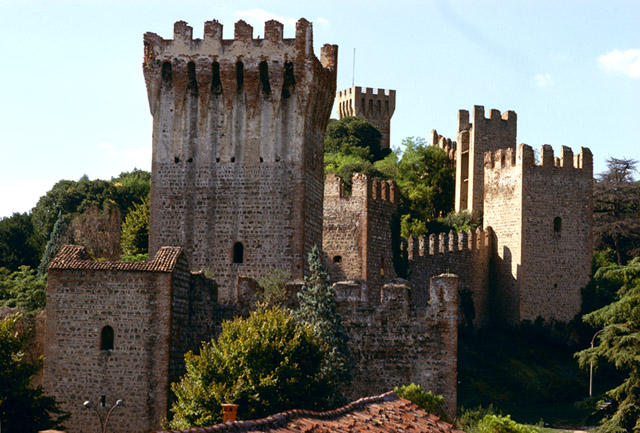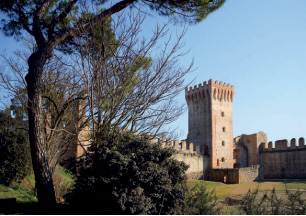|

Este is a town in the county of Padua, situated south of the Euganean Hills. It is 30 km from Padua, 60 from Venice and from Bologna, and 8 km only from the Municipal territory of Monselice. It can be reached from the A13 highway, Monselice exit, or from the main road S.S. no. 16 Padova-Rovigo and the county road S.R. no. 10 Padana Inferiore. The town of Este was named after the river Adige, or Athesis in Latin, which ran in this territory until the year 589 when a devastating flood recalled by Paolo Diacono moved its course a few kilometres southward.
The conquest of the Veneto by the Romans was a peaceful process: the people of the Veneto joined forces with the Romans against the Gauls, and Este became a Roman colony. Este proved able to preserve its administrative independence until the end of the Roman Republic, while the centralization of the political power in the Roman Empire prevented the continuation of past magistratures. After the collapse of the Roman Empire, the town of Este was wrecked by Attila's troops and came to a mere rural village.
The town rose again after the 10th century, when its feudal lord Azzo - later to be called Azzo II d'Este - built a castle there. The Lords of Este, having received the title of marquis, initiated one of the most important Italian dynasties and moved their capital city to Ferrara (1239).
Conquered twice by Ezzelino da Romano, who had its castle pulled down (in 1238 and 1249), in the 14th century Este was disputed by the della Scala, the da Carrara and the Visconti Houses until it surrendered spontaneously to Venice in 1405. This marked the beginning of a long period of peace. Under the rule of Venice Este experienced a period of economic and demographic growth, which was unfortunately interrupted by the tragic plague of 1630.
The administrative reorganization by Napoleon and the rise of the middle class gave new thrust to the town governors, who promoted various initiatives of great interest as the establishment of the museum called Museo Nazionale Atestino and the opening of public schools. The development of Este continued also after it was annexed to the Kingdom of Italy, in 1866.
Il Castello
 The current building dates back to the 1340's and it was built by Ubertino da Carrara on the ruins of a previous fortification, destroyed in 1249 by the troops of Ezzelino da Romano. The current building dates back to the 1340's and it was built by Ubertino da Carrara on the ruins of a previous fortification, destroyed in 1249 by the troops of Ezzelino da Romano.
The oldest portion dates back to the age of great invasions and it consists in a circle of walls with a small church and a big building in the centre.
In the 11th century, the first structure was incorporated in a series of circles of walls and of residential buildings until when the marquis of Este restored the castle for defensive purposes, towards the middle of the 13th century. The building has a square plan, and is surrounded by a very strong wall with twelve turrets. The donjon is located on the hill, in order to control the whole town; its highest point is a square tower, while to the north-east it has a small castle called Rocca del Soccorso, which originally served as the access to the fortress. The space within the circle of walls is a public garden now.
The Castle served defensive purposes until the town spontaneously yielded to the Republic of Venice, and then the whole structure was sold to the Mocenigo family, who had the Palazzetto (small palace) built toward the end of the 1500s, now housing the Museo Nazionale Atestino.
Information:
Information and Tourist Office: +39 0429 600462
|